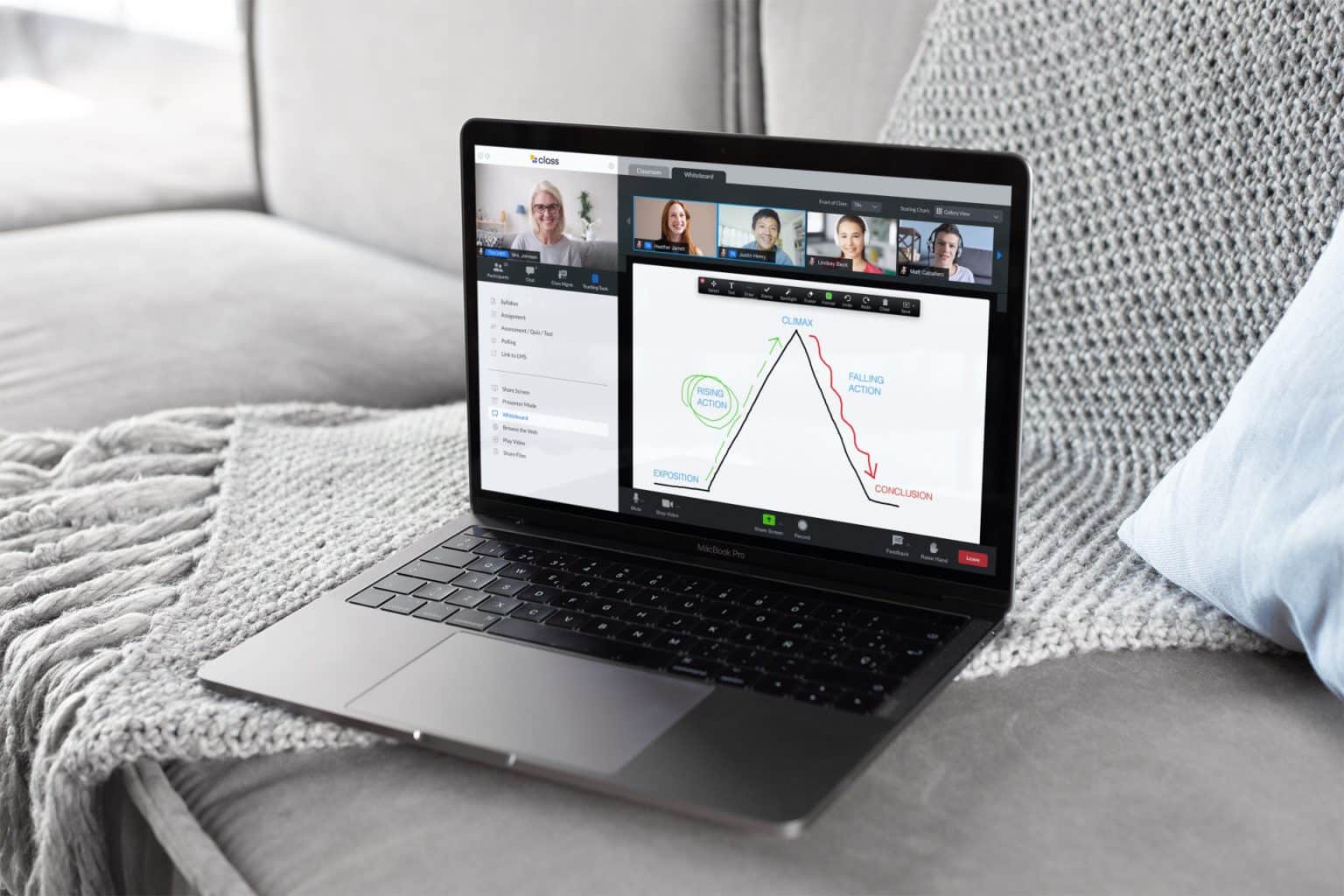Teaching With Zoom: Lights, Camera, Action
One interesting finding from Cirillo’s research is the positive effect that asking students to keep their videos on can have. In a post published by the University of Delaware, Cirillo says: “We visited several breakout rooms in different classes, and we saw great active learning instruction when everyone had their cameras on. It was seamless, almost like they could’ve been in person, though, admittedly, this usually worked better with smaller groups.”
Keeping the cameras on also offered benefits for teachers, helping to “diminish the fatigue associated with teaching to black boxes on a computer screen.”
Improving Asynchronous Learning
In addition to discovering the value of breaking into small Zoom rooms to encourage engagement and participation, the University of Delaware research team found that Zoom also offered opportunities for improving online classes. Teaching with Zoom allows instructors to easily film classes and group interactions, offering a valuable tool to give student teachers a chance to review and reflect on their interactions with students, while giving teachers a tool for providing feedback to student teachers.

Maximizing the Impact of Video and Visual Interaction
Joe Binswanger is director of information technology at Sarasota County Schools in Florida. Sarasota County Schools adopted a concurrent teaching model where some students are present in the classrooms, while some are taking classes online from home.
As Sarasota Schools’ new process evolved, teachers and IT teams recognized a need for technology that enables teachers to bring the classroom online. In order to meet these evolving needs of virtual classrooms, Sarasota Schools installed Jabra PanaCast cameras and Speak 510 speakerphones in 2,500 classrooms across the district – from Pre-K through 12th grade – to keep students at home involved in their online classes and provide a more immersive virtual classroom experience.
Jabra PanaCast, the world’s first Panoramic-4k plug-and-play video solution, offers a view of the entire classroom so students at home are able to see the teacher’s instructional environment so they don’t miss out on nonverbal cues and can feel like they are a part of the hybrid classroom. For more in-depth instruction, Binswanger says, “the intelligent Zoom feature can automatically adjust the frame to focus only on the teacher, or whoever is talking at the time.”
Binswanger says: “We’re excited for what this technology means for teachers, and how it allows them to seamlessly, and more meaningfully connect with remote students.”
Getting Students in on The Action
Taylor Vecchio, executive director of AnthropologyArts.com engaged students by asking them to “teach the teacher” about new classroom technologies. She says: “I structure a brief five-minute time for kids to teach me one Zoom tool,” she says. She assigns students to a week when it will be their turn to teach so they’re well prepared.
“I’ve learned lots of small techniques that help a lot such as spotlighting, annotating, and pointer,” she says. “I’ve learned so many new tricks I wouldn’t have learned otherwise, and I can try it out with the kids without having to worry about messing it up while I’m trying to teach content.
Teachers around the country—and around the world—are discovering many best practices for using zoom teaching tools and teaching in virtual classrooms. They’re adopting new classroom technologies to improve hybrid classes. Zoom teaching tools offer them a wide range of options to choose from to help keep things interesting for students.
“There has never been a better time to take a closer look at systems for virtual learning and ensure that both students and teachers are positioned for success,” Binswanger says.







